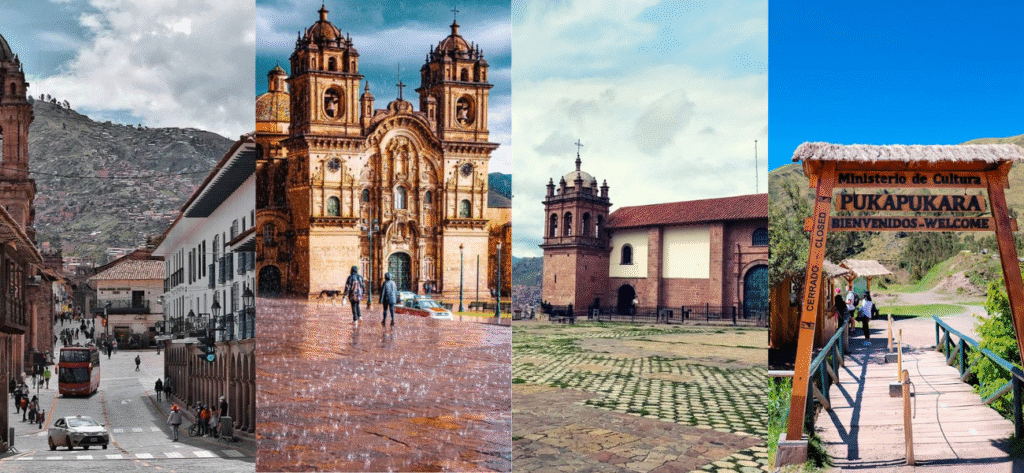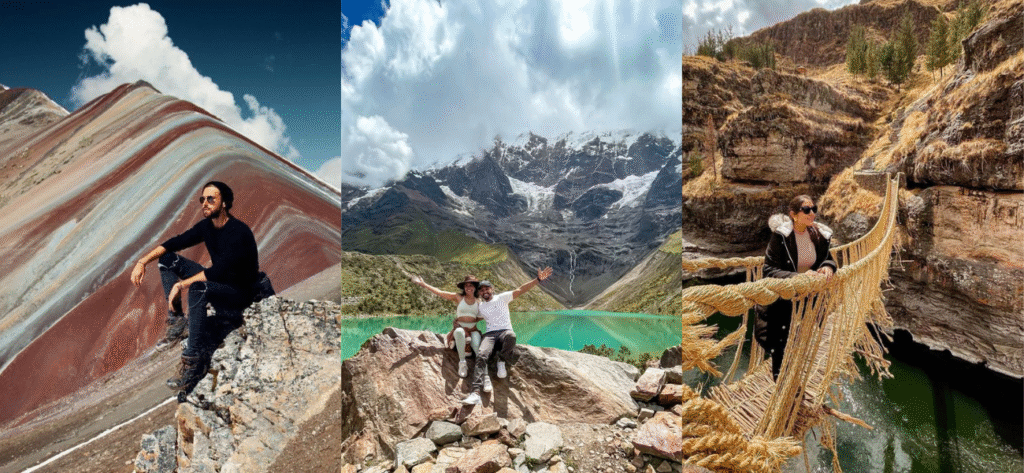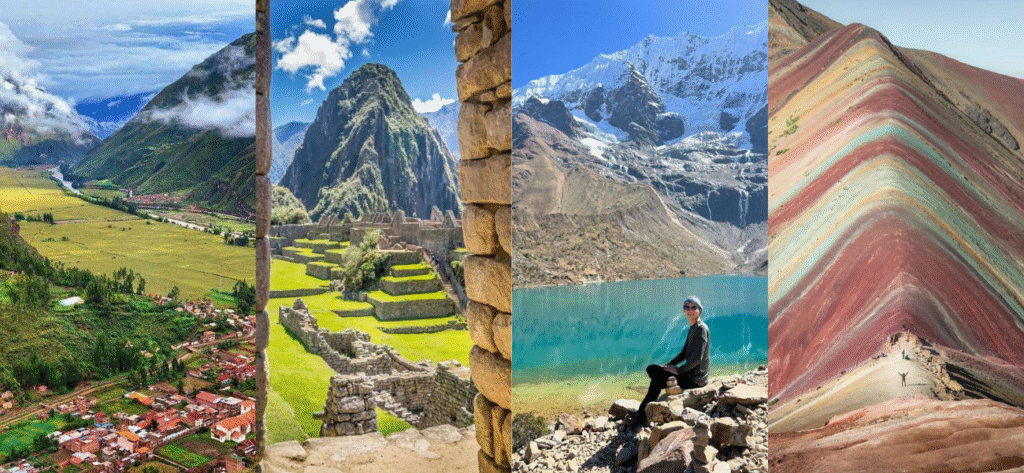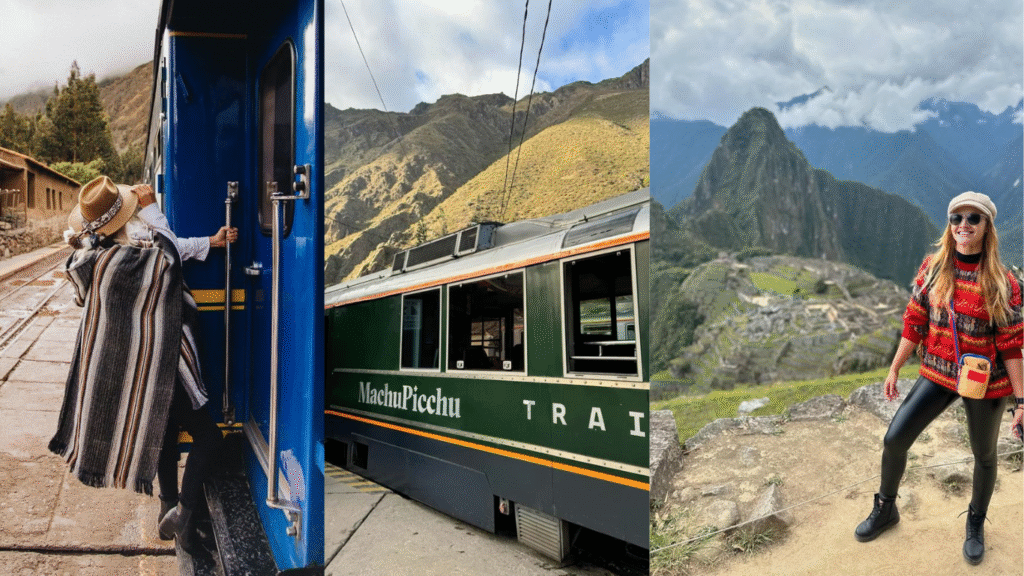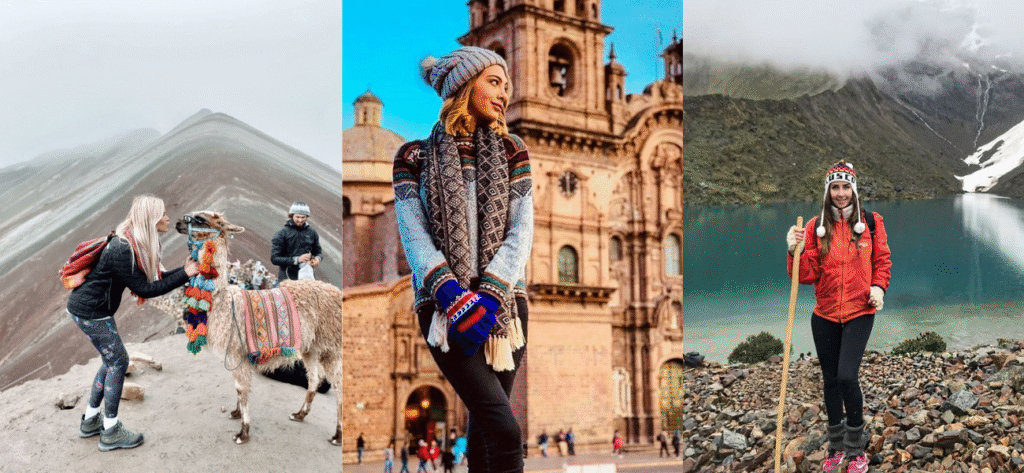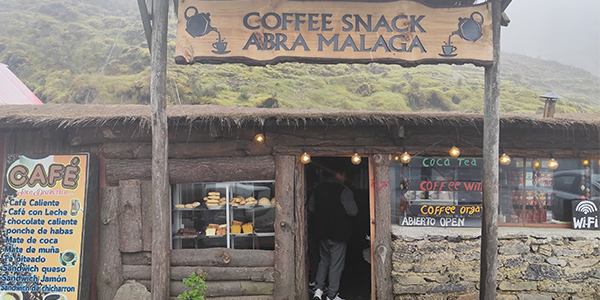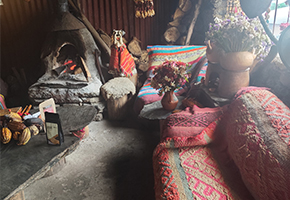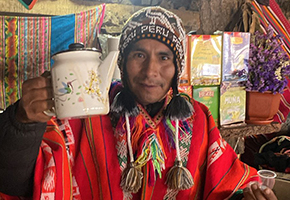Birds of the Salkantay Trek: A Paradise for Birdwatchers
While the Salkantay Trek is famous for its dramatic mountains and the road to Machu Picchu, it also hides another treasure: an incredible variety of bird species. As you hike through changing landscapes — from snowy peaks to lush cloud forests — you’ll find yourself surrounded by vibrant birdlife.
Whether you’re a seasoned birdwatcher or just someone who loves nature, spotting birds along the Salkantay route will make your trek even more magical.
Here’s a guide to some of the feathered friends you might encounter!
Andean Condor (Vultur gryphus)
The king of the Andes, the Andean Condor, is one of the largest flying birds in the world. With a wingspan that can reach 3.3 meters (10 feet 10 inches), spotting one soaring high above the mountains is an unforgettable moment.
- ✅ Look for them near the high passes, especially around Salkantay Pass.
Torrent Duck (Merganetta armata)
This unique duck thrives in fast-flowing mountain rivers. Its ability to swim against strong currents is fascinating to watch.
- ✅ Keep an eye on rivers as you descend into lower altitudes, particularly near Chaullay and La Playa.
Masked Trogon (Trogon personatus)
A colorful gem of the cloud forest, the Masked Trogon flashes its brilliant red belly and green back as it perches quietly among the trees.
- ✅ Best seen in the warmer, forested sections of the trek, especially from Chaullay onwards.
Andean Cock-of-the-Rock (Rupicola peruvianus)
Peru’s national bird, the Cock-of-the-Rock, is famous for its bright orange plumage and unique courtship dances. It’s a top sighting for birdwatchers.
- ✅ Look for them in the cloud forests closer to the jungle zones of the trek.
Hummingbirds
The Salkantay route is home to numerous species of hummingbirds, including:
- The Giant Hummingbird (the largest in the world)
- The Green-tailed Trainbearer
- The Sparkling Violetear
- ✅ You’ll hear their buzzing wings as you pass through areas with flowering plants.
Why the Salkantay Trek is a Birdwatching Hotspot
As the trek moves from high-altitude Andes to the cloud forest and tropical jungle, you pass through multiple ecosystems. This transition makes it possible to spot an impressive variety of species in just a few days.
- High altitudes (above 4,000 meters): Condors, ground-tyrants, Andean geese.
- Mid-elevations (cloud forest zones): Trogons, hummingbirds, tanagers.
- Lower jungle areas: Parrots, toucans, and Cock-of-the-Rock.
Tips for Spotting Birds on the Trek
- ✅ Start early: Birds are most active at dawn.
- ✅ Bring binoculars: A lightweight pair will enhance your experience.
- ✅ Walk quietly: Sudden movements can scare birds away.
- ✅ Hire a guide: Many local guides know exactly where to find rare species.
Final Thoughts: More Than Just a Trek
The Salkantay Trek isn’t just about reaching Machu Picchu — it’s about connecting with nature every step of the way.
Whether it’s watching a condor glide above snow-capped peaks or spotting a tiny hummingbird sipping nectar, the birds you meet will make your journey even more special.
What you should do before booking Salkantay Trek to Machu Picchu
1. What is the Salkantay Trek, and how does it compare to the Inca Trail?
The Salkantay Trek is an alternative route to Machu Picchu, offering breathtaking landscapes, including snow-capped mountains, cloud forests, and high-altitude passes. Unlike the Inca Trail, the Salkantay Trek does not require a permit and is less crowded, providing a more adventurous experience.
2. How many days does the Salkantay Trek take to reach Machu Picchu?
The standard Salkantay Trek takes 5 days and 4 nights, covering approximately 72 km (45 miles). However, there are shorter and longer variations of the trek available.
3. What is the difficulty level of the Salkantay Trek?
The Salkantay Trek is considered moderate to challenging, as it involves hiking at high altitudes and steep ascents. The highest point is the Salkantay Pass at 4,650 m (15,255 ft). Proper acclimatization is recommended before starting the trek.
4. Do I need a permit to hike the Salkantay Trek?
No, unlike the Inca Trail, the Salkantay Trek does not require a special permit. However, you do need an entrance ticket for Machu Picchu, which should be booked in advance.
5. What is the best time of year to hike the Salkantay Trek?
The best time to hike the Salkantay Trek is during the dry season (April to October). The weather is more stable, with clear skies and less rain. The rainy season (November to March) can make the trail muddy and challenging.
6. What should I pack for the Salkantay Trek?
Essential items include:
- Hiking boots (waterproof and comfortable)
- Warm layers (temperatures drop at night)
- Rain jacket or poncho
- Sleeping bag (suitable for cold weather)
- Sun protection (hat, sunglasses, sunscreen)
- Water bottle and purification tablets
- Basic first aid kit
7. Is altitude sickness a concern on the Salkantay Trek?
Yes, altitude sickness can be an issue, especially at the Salkantay Pass (4,650 m). It is recommended to spend a few days in Cusco (3,400 m) before the trek to acclimatize. Staying hydrated, avoiding alcohol, and chewing coca leaves can help with symptoms.
8. How do I get to Machu Picchu from the end of the Salkantay Trek?
After reaching Hidroelectrica, you have two options:
- Hike 3 hours to Aguas Calientes.
- Take a 30-minute train from Hidroelectrica to Aguas Calientes.
From Aguas Calientes, you can hike or take a bus up to Machu Picchu.
9. Are there accommodation options along the Salkantay Trek?
Yes, most trekking companies provide campsites or eco-lodges along the route. Some upgraded tours offer more comfortable accommodations, such as glass cabins or domes. The final night is usually spent in a hotel in Aguas Calientes.
10. Can I visit Machu Picchu without hiking the Salkantay Trek?
Yes, you can take a train from Cusco to Aguas Calientes, followed by a short bus ride or hike up to Machu Picchu. This is the most popular option for visitors who prefer not to hike.
You must be interested
- Salkantay Trek to Machu Picchu
- Salkantay Trail 5 days 4 nights
- Salkantay Trek difficulty level
- Salkantay vs Inca Trail comparison
- Best time to hike Salkantay Peru
- Salkantay Trek tour price 2026
- Guided Salkantay Trek packages
- Salkantay Trek altitude and acclimatization
- Salkantay Trekking tours from Cusco
- Salkantay Trek full itinerary
Salkantay Travel Information
- Salkantay Trek Food: What You’ll Eat on the Trail
- Birds of the Salkantay Trek: Species You Can Spot on the Route
- Is the Salkantay Trek Dangerous?
- Salkantay Trek Altitude: Heights Along the Route
- Flora and Fauna in Salkantay Trek
- Altitude Sickness on the Salkantay Trek
- Salkantay Trek Difficulty: How Hard Is the Route?
- Salkantay Trek FAQs: Answers to Common Questions
- Best Time to do Salkantay trek
- Training for Salkantay Trek: How to Get Ready
- How long is the Salkantay Trek?
- Salkantay Trek Price: How Much Does It Cost?
- What Is the Salkantay Trek?
- What to Bring on the Salkantay Trek?
- Best Time to Do Salkantay Trek
- Your Insider’s Guide to Salkantay Trek
- Where is Salkantay?
- Salkantay highlights
- Tour Montaña de Colores con Transporte







